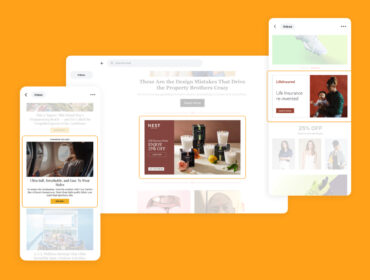The Top 3 Takeaways from eTail West 2020
The Top 3 Takeaways from eTail West 2020
It’s been a week since eTail in Palm Springs, which means no longer am I sipping my morning coffee on a balcony overlooking retirees scooting around on golf carts. Nope. Now, I’m back to sipping my Brooklyn cold brew while watching a pigeon and rat stare each other down over a day-old slice of pizza that fell onto the subway tracks.
After taking time to do important things – like google all the questions we had about flamingos like “do they have teeth?” (no) and “what do they eat?” (algae, crustaceans, brine shrimp, and aquatic plants) – I took a minute to look back on the presentations and conversations we had.
Here’s a list of the top 3 takeaways from eTail West 2020.

1. Purpose matters.
A challenge for ecommerce D2C brands is proving your value enough for people to go out of their way to buy your product. One way is to have a strong purpose behind your brand that makes customers seek your product out online instead of going to a superstore and buying a similar product.
Kate Huyett, CMO of Bombas, touched on this. “It’s really on us to build a product good enough for someone to go out of their way for and a brand that people can see the impact of.”
Along with creating a high-quality product, Bombas has built a charitable brand and has donated 30 million socks. Yes, I said 30 million. I was shocked, too. However, it’s that level of social impact that keeps customers supporting Bombas.

This isn’t only limited to ecommerce brands. Big retailers, such as Sephora, have also taken this approach. Recently, Sephora set out with a new purpose to create a place where all feel safe, loved, and respected.
Sephora is educating all retail employees on creating safe spaces, serving diverse clients, and building inclusive teams. They also launched an in-store beauty classes program called “Classes for Confidence” for people at all stages of life transitions, and launched their “We Belong to Something Beautiful” campaign to celebrate the LGBTQ community and people of color.
All of this is just a small piece of the efforts they are making to create the most inclusive beauty community. It’s Sephora’s strong purpose that’s driving customers to feel loved and continue supporting the brand.
As their VP of Marketing, Abigail Jacobs, said, “We have to stay vulnerable and be open to learning on a day-to-day basis.”

2. Take Control of Your First-Party Data
Knowing your customer is nothing new. It’s a topic that has been talked about for years now. However, with the recent news of Google dropping third-party cookies, leveraging your own first-party data has never been more important. Overstock is a brand that truly takes control of their data and creates the best possible experience for their customers. Their Group Product Manager, Cathy Bergstrom, perfectly phrased it: “We have built a relationship with you as a customer so I’m going to respond to just you.”
Overstock has been able to achieve this by building an innovative tech stack that analyzes data to the millisecond and creates every site page and email in real-time with content catered to that specific customer at that exact moment.
To do this, Overstock had to build their own customer data platform and asset management system which houses 40 million images that are all tagged. We’re not just talking about a photo of a sofa being tagged “sofa.” They go as far as to what the sofa feels like and even attach emotions to pieces of furniture. Why? They understand that shopping for your home is emotional and that you want every room to have a specific feeling. Their platform is able to connect pieces of content to those feelings and predict what the customer wants.
This is a prime example of how a brand can take control of their first-party data and use it to build relationships with their customers. As Cathy put it, “We love our customers and technology is how we show that love.”

3. Don’t Get Caught Flat-Footed, Test New Channels
Don’t put all your eggs in one basket when it comes to advertising channels. Quip’s VP of Growth, Shane Pittson, spoke about how they are continuously looking for what’s next. They reserve a part of their budget strictly for testing as a way to future proof themselves from big changes that might happen, like a tweak to an algorithm.
When looking for new channels, our friends at Quip think about how certain routines or behaviors can help inform where they can reach their customers. For example, people travel and want to divert their attention during flights. I don’t know about you, but when I need a break from the podcasts I’ve downloaded, I flip through the seatback magazine to laugh at the“Toilet Roll iPod Docking Stations” or “Day of the Week Clocks” being sold. As it turns out, podcasts and airline magazines are channels where Quip is seeing a lot of success.
Another example is that while the circulation of print newspapers might have decreased, people still check the news regularly. They just do it by opening their inbox and reading through their daily email newsletters.
And while it can be hard to get resources to put towards a channel that is unproven, Shane recommends prioritizing channels that you’re able to launch on by reusing creatives. During an initial test, Quip will repurpose existing creatives and monitor the channel for signs of success. Once they are able to prove that the channel has value, they refresh creatives and cater the messaging to the channel.
But if there is one thing Shane stressed over everything else, it was to always document the process and the results. “As you race to find new opportunities for acquisition, you can often leave the knowledge that got you to where you are behind. Taking time to build resources, document, and explain results and approaches to tests is very worthwhile.”
—



